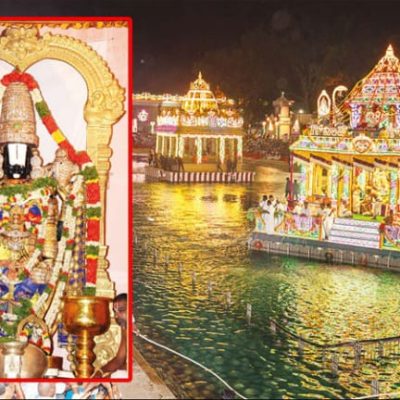KEELADI TALES: CITY, SUBURB OR SOMETHING ELSE ALTOGETHER?

Was Keeladi ancient Madurai or its industrial suburb? Archaeologists differ on the question. They, however, agree that the habitation was abandoned between 500 CE and 700 CE, though they don’t know why? Some say it’s because the Vaigai changed course. It now flows a km from Keeladi. Others say an epidemic, a drought or a flood could have been the reason for abandoning the settlement. The excavations, though, show no evidence of a flood. But what was Keeladi? The ASI’s report on the excavations mentions the13th century epic Tiruvilayadalpuranam, which talks about Manalur, a village near the Keeladi site. The epic tells the story of Madurai’s founding thus: Amerchant from Manalurtold Pandya king Kulasekara that he saw celestials make offerings to Lord Shiva temple in a forest west of the village. The king too later had a dream in which Lord Shiva appeared as a saintly being andt old him to cut down the forest of kadamba trees on the west side of Manalurand build a well guarded new city with a temple. That’s how Madurai was born,goes this story. Citing this epic, some archaeologists argue that ancient Madurai was near Manalur and could be Keeladi, which is an urban settlement. Others say the unearthed structures and artefacts indicate the presence of many industries. Thus Keeladi could have been an industrial suburb of ancient Madurai from where products were sent down river Vaigaifor export through the ancient port of Alagankulam. With only 2% of the total mound area (110 acres) identified by ASI excavated so far, the available literary references and archaeological evidence areinsufficient to come to a conclusion. “Before Tiruvilayadal Puranam, Paripatal, which is one of the eight anthologies of Sangam literature, mentions that Madurai city was situated onthe eastern side of Thiruparankundram. Keeladi site was on the easternside of it. There is no archaeological evidence found in present-day Maduraiof the Sangam age,” says professor M Seran who worked as an expert archaeologist in Keeladi. The residents of Keeladi could have shifted to present-day Madurai because of flood, drought or epidemic, he adds. The course of the Vaigai might have changed as the early deposits have riverine sand, indicating the Keeladi site was very close to the river. Now, the river is about a km away. This could have started the migration, says ome experts. Madurai-based archaeologist C Shanthalingam is categorical that Keeladi isnot ancient Madurai. “Tiruvilayadal Puranam was written in the 13th century. Keeladi dates back 3,000 years. Madakulam Keezh Madurai refers to the city closer to Madakulam. This Madakulam in Madurai is 2,000 years old. Keeladi or Manalur could have been a suburb of the ancient city. The present Madurai is the ancient Madurai,” he says. Archaeologist K Sridharan also concurs with this view and says Keeladi could have been an industrial hub of ancient Madurai on the banks of river Vaigai. “They could have used the Vaigai to transport goods to Alagankulam port. Alagankulam is an equally important site. We need to study Alagankulam further to know more details about Keeladi,” he says. The ASI team said it did not find anyevidence of flooding in the trenches inKeeladi. “With the upper layer of the mound disturbed due to agricultural activities, it could have been roughly abandoned between 500 CE and 700 CE. To know whether there was a drought,a geological study is required,” says ASI’s superintending archaeologist KAmarnath Ramakrishna. Researchers say the Keeladi findings and Sangam literature together explain the gap between Indus Valley Civilization and second urbanization. “There is a huge gap between Indus Valley Civilization and second urbanization in the Indian subcontinent. Sangam literature and Keeladi findings together explains this gap with Indus-type graffiti marks on potsherds unearthed n Keeladi,” says Indologist R Balakrishnan. “The logic is that a maritime civilization and its continuity first should be explored in the coastal regions. The same potsherds have ancient names in Tamil Brahmiscript, which was found in Sangam literature, inscriptions on rocks surrounding Madurai and even now some names including ‘Atan’ are being given to newborns. We can find these names on ration cards and voter ID cards even today. Continuity is important in history making,” says Balakrishnan. He argues that second urbanization could have flourished in Tamil Nadu.





